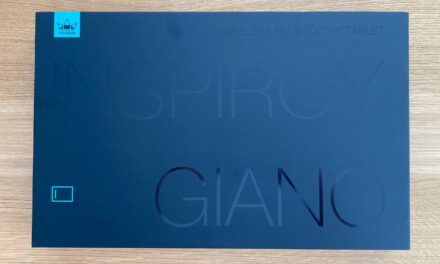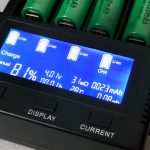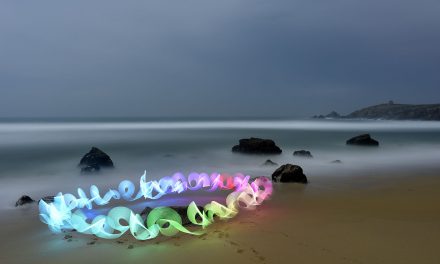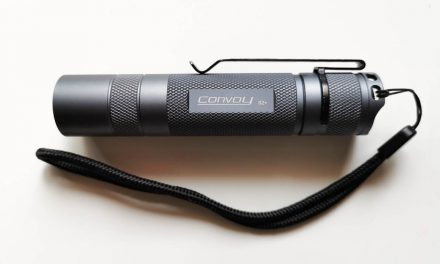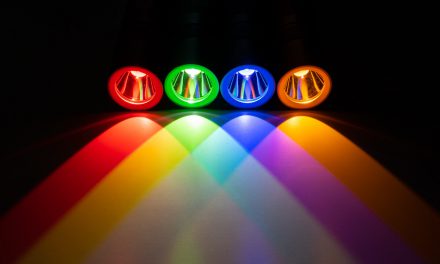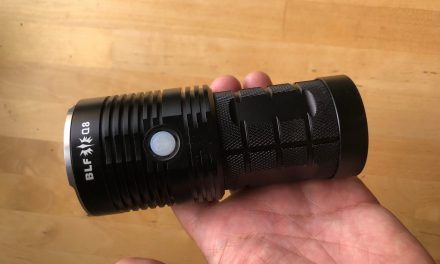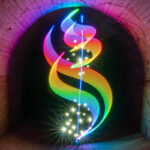
Flashlight Review: MHVAST TG20

MHVAST is a another new Chinese flashlight brand. The TG20 is their first offering in the popular tactical 18650 tube light class. With an increasing amount of quality choice in this category, lets see how the TG20 compares.
Disclaimer
The MHVAST TG20 was send to me for an honest review by Banggood. I receive no commission from links or sales. Product Link. $34.99 with code “3034f8”.
Construction
The MHVAST TG20 arrived in a padded branded cardboard box. As well the flashlight, a micro USB charging cable, clip, lanyard, spare tail button cover, spare O-rings, and instructions were included.
The MHVAST TG20 is an 18650 tube light, with a head diameter similar to the body at 25.4mm. This makes it a great fit for light painting connectors such as the LPB Universal Connector and Herramientas Cone. The light is relatively long for a 18650 tube light at 141mm, the extra length being due to the side switch and USB charging. The battery tube unscrews at both ends, though for normal use only the tailcap would need to be unscrewed for changing the battery. The battery tube has springs at both ends, which allows for flat top, raised top, and button top batteries. I had no issue with fitting unprotected 18650 batteries such as the Panasonic NCR18650GA, and obese protected 18650 batteries such as the Klarus 18GT-36. 2x non rechargeable CR123 batteries will also fit on this light, though these were not tested (who still uses CR123 batteries anyway?).

MHVAST TG20 Side Switch
The light has a side switch for changing modes, and a momentary/forward clicky tail switch. The side switch is not easily accessible when in above mentioned light painting connectors. More on user interface in the next section. The construction is very solid for a budget(ish) light, and the knurling is nice and grippy.
The TG20 has internal USB charging for 18650 batteries. The head section can be partially unscrewed to expose the micro USB port. Unfortunately the first few attempts to unscrew the head were unsuccessful – it was extremely stiff, and I kept accidentally unscrewing the head section from the battery tube which is threaded in the same direction. Once I eventually managed to access the charging port, it was tested that charging terminated at 4.22V, which is marginally too high in my opinion. A minute of runtime post-charge will reduce the voltage to a more comfortable 4.2V.
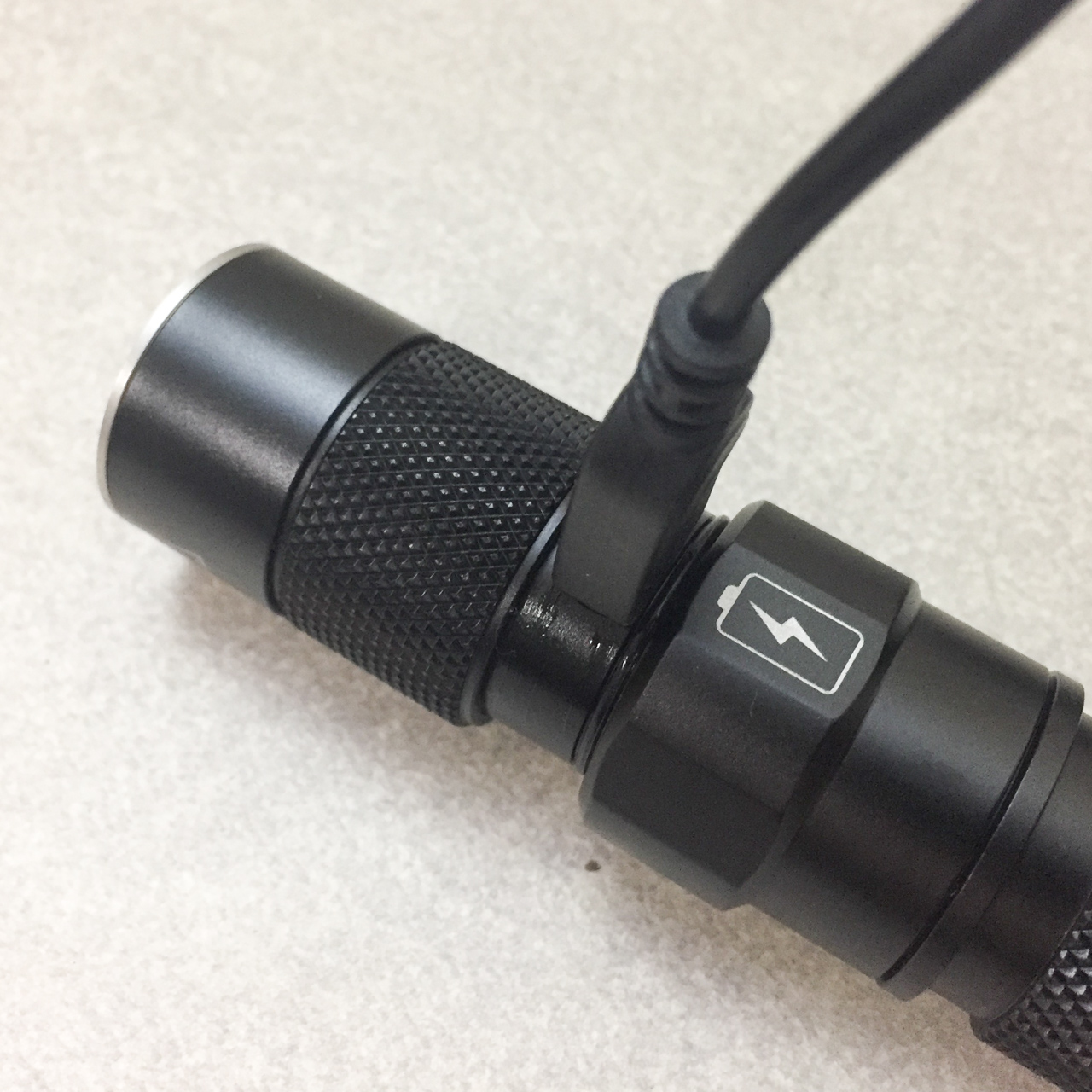
MHVAST TG20 USB Charging
User Interface
The TG20 has two switches – a side switch to change modes, and a momentary/forward clicky tail switch for on/off/momentary. This is a similar format to the Thorfire TK15S, Thrunite TC12v2, and Atactical A1S.
The tail switch can be used for on/off with full click, or with a half press for momentary light, which is great for light drawing. There is quite a lot of travel on the momentary switch before it engages which I really like. The momentary switch works for the previously memorised mode (low/mid/high). Unfortunately, there is no momentary for strobe – the Nitecore P10GT is the only light I’ve reviewed with momentary for both memorised mode and single frequency strobe.
A click of the side switch will change modes in order high>mid>low>off>…, starting on the last memorised mode.
From on, a double click will enter strobe mode. This is a single frequency strobe (10Hz with 50% on/off time), beloved by light painters. Further double clicks will enter SOS, and flashing beacon modes. A single click will return to to the previously memorised mode.
A long click will enter Eco mode, which is a bit brighter than what I would consider to be “moonlight”. I prefer direct access to moonlight modes, as it allows for better dark adjustment for eyesight. A single click will exit Eco mode and go back to the previously memorised mode.
There is a crude battery level indicator light in the side switch, which displays green for “sufficient charge”, red for low, and flashing red for critically low. When charging, the tail switch needs to be on. The indicator light alternates between red and green whilst charging, and is green when charging has terminated. I would assume that there is no low voltage protection as my protected battery protection circuit was triggered, thus I would recommend that non li-ion expert users use quality protected batteries (such as Keeppower 3500mAh or Klarus 3600mAh) in this light. The light can however be mechanically locked out by slightly unscrewing the tail cap.
Beam, Output, and Runtime
The TG20 uses a genuine Cree XP-L LED emitter. This is available in cool white (6500k – tested) or neutral white (5000k) which is great. In combination with a deep smooth reflector, gives the TG20 a relatively narrow and throwy beam for this class of light at more than 17,000cd peak beam intensity. This means that the TG20 is great for illuminating longer light painting tools such as tubes, light swords, and lightflutes.

MHVAST TG20 Beam Profile
As is usual for the Cree XP-L/smooth reflector combination, there is noticeable tint shift. The hotspot is almost pure white, with the inner spill beam having a yellow tint, and then a purple tint for the outer spill beam. Interestingly, as the head can be moved to allow access to the USB port, this can be used as a beam collimator, though only by around 10 degrees.
High, mid, and low modes are claimed to be at 1250, 525, and 186 lumen respectively. Testing showed output to be within 10% of the claimed figures. I consider the 186lm low mode to be a bit too high – I much prefer the 50lm low mode on the Thorfire TK15S. Eco mode is at 7 lumens, and strobe at 1250 lumens.
I have read another review that claimed that there was no automatic step-down. However, I repeatedly recorded a reduction in brightness to approx. 80% of the original brightness just after 30secs, and to 60% at around 120secs where output levels off. From cold, the light starts to get uncomfortably hot after around 5 minutes. If already warm, the light can get hot much faster – there appears to be no temperature controlled step-down.
The output gradually declines during the runtime, as I had to manually step down the output due to heat I could not create a continuous runtime graph. The light is claimed to use a constant current driver, and due to this no PWM was detected. Colour rendering index (CRI) is in the usual low 70s, good enough for most purposes.
Conclusion
Things I liked:
– Solid build quality for the price
– Mode memory for low, mid, and high modes
– Momentary for low, mid, and high modes – and a nice forward clicky switch
– Single frequency strobe (10Hz)
– Good output and throw/peak beam intensity for this class of light
– Choice of cool white (6500k 1A) or neutral white (5000k 3C) emitters
Things I didn’t like:
– Very difficult to initially access the USB charging socket
– No momentary for strobe
– Low mode is too high at 186lm
– No instant access to Eco mode
– Charging terminated marginally too high – 4.22V
The MHVAST is a very capable and good value for money 18650 tube light suitable for light painting. Momentary on high, mid, and low modes is a big plus. Internal USB charging will also be popular with consumers. Lack of momentary on strobe, a relatively bright low mode, and no direct access to Eco mode prevents this light from being “best of breed”.
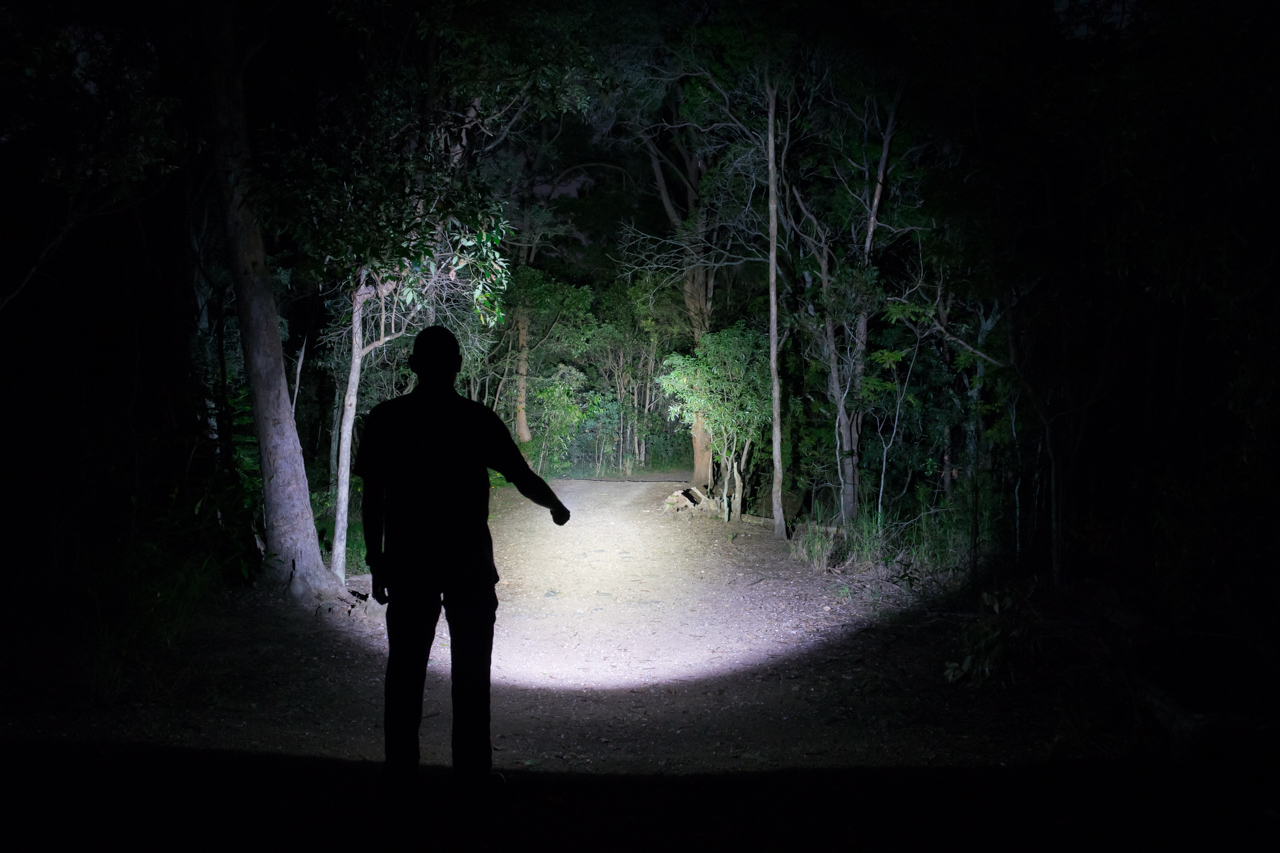
Beamshot on high mode. f/6.3, 2secs, ISO400.


